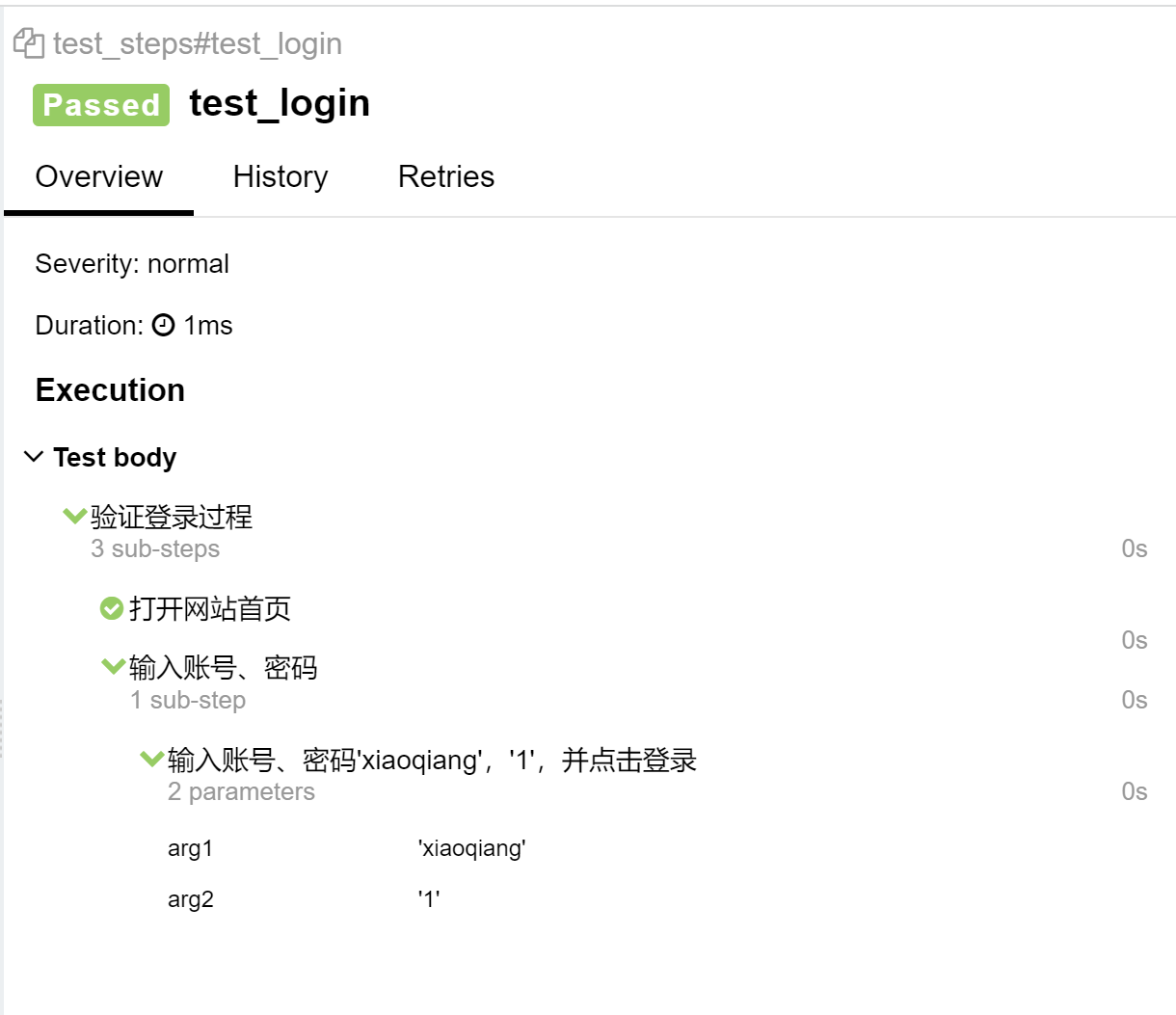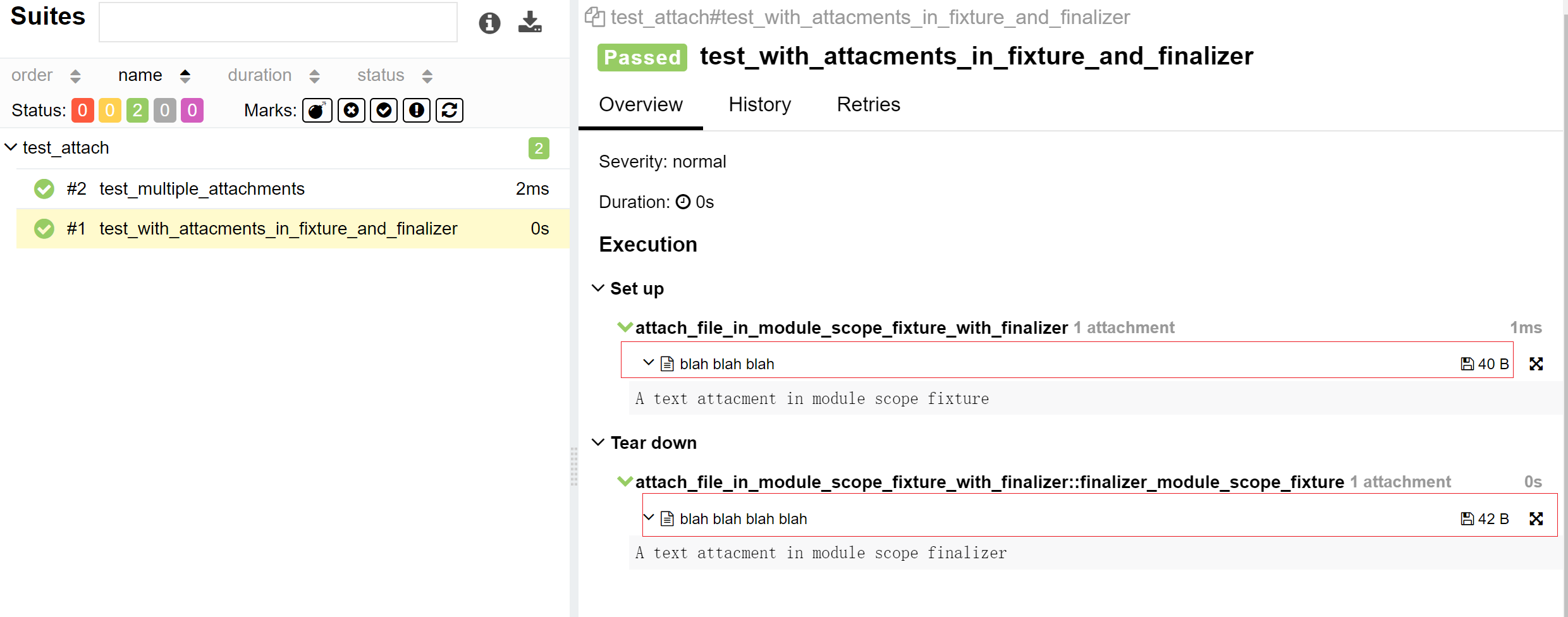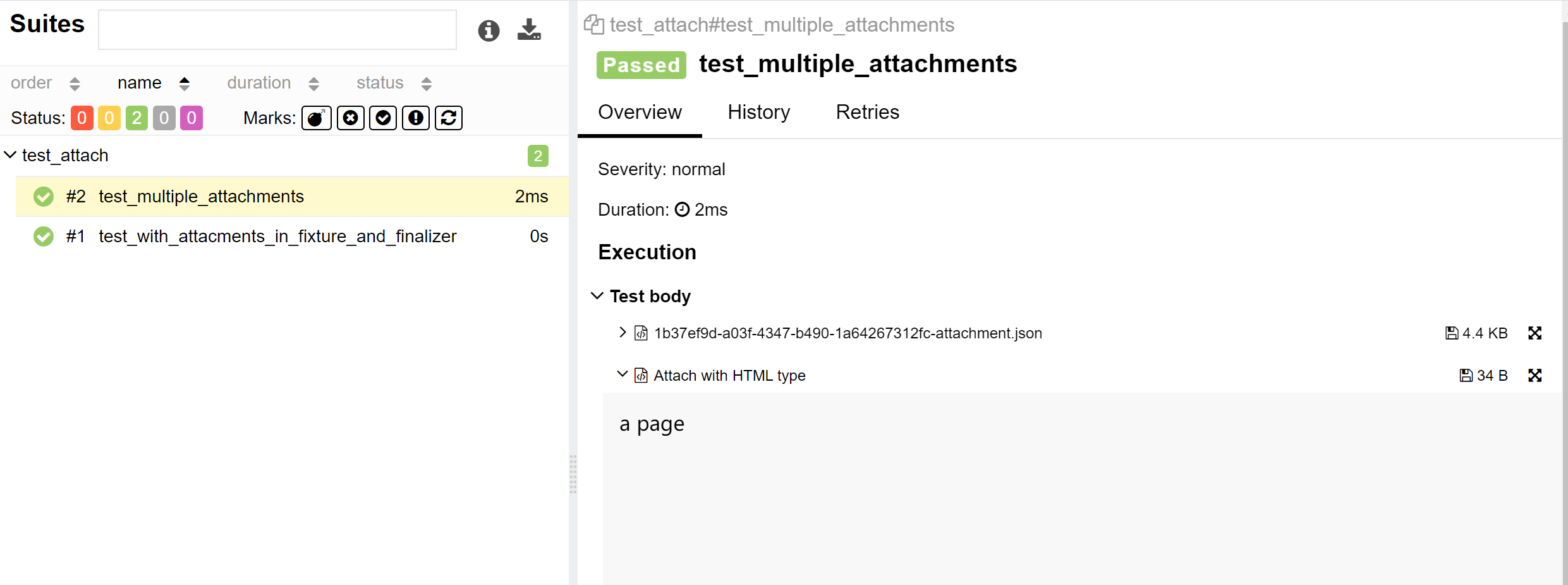@allure.step/@allure.attach 使用
# @allure.step/@allure.attach 使用
# @allure.step
- 可以理解为我们编写测试用例中的每一步操作步骤,而在 allure 中表示对每个测试用例进行非常详细的步骤说明
- 通过
@allure.step()可以让测试用例在 allure 报告中显示更详细的测试过程
# 示例
import allure
@allure.step("打开网站首页")
def open():
pass
@allure.step("输入账号、密码")
def input_UsernameAndPassWord():
sendAndClickLogin("xiaoqiang", "1")
@allure.step("输入账号、密码{arg1},{arg2},并点击登录")
def sendAndClickLogin(arg1, arg2):
pass
@allure.step("验证登录过程")
def test_login():
open()
input_UsernameAndPassWord()
1
2
3
4
5
6
7
8
9
10
11
12
13
14
15
16
17
18
2
3
4
5
6
7
8
9
10
11
12
13
14
15
16
17
18
测试报告显示:

总结
- step(param),参数就是标题,你传什么,在 allure 上的步骤名就显示什么
- 支持位置参数和关键字参数 {arg1},{arg2},可参考报告中“ 输入账号、密码 'xiaoqiang','1',并点击登录”处,如果函数的参数没有匹配成功就会报错
# @allure.attach
作用:allure 报告还支持显示许多不同类型的附件,可以补充测试结果
# 两种语法格式
# 语法一:
allure.attach(body, name, attachment_type, extension)
1
参数列表:
- body:要显示的内容(附件)
- name:附件名字
- attachment_type:附件类型,是
allure.attachment_type里面的其中一种 - extension:附件的扩展名(比较少用)
allure.attachment_type 提供的附件类型:
TEXT = ("text/plain", "txt")
CSV = ("text/csv", "csv")
TSV = ("text/tab-separated", "tsv")
URi_LIST = ("text/uri-list", "uri")
HTML = ("text/html", "html")
XML = ("application/xml", "xml")
JSON = ("application/json", "json")
YAML = ("application/yaml", "yaml")
PCAP = ("application/vnd.tcpdump.pcap", "pcap")
PNG = ("image/png", "png")
JPG = ("image/jpg", "jpg")
SVG = ("image/svg-xml", "svg")
GIF = ("image/gif", "gif")
BMP = ("image/bmp", "bmp")
TIFF = ("image/tiff", "tiff")
MP4 = ("video/mp4", "mp4")
OGG = ("video/ogg", "ogg")
WEBM = ("video/webm", "webm")
PDF = ("application/pdf", "pdf")
1
2
3
4
5
6
7
8
9
10
11
12
13
14
15
16
17
18
19
20
21
22
23
24
2
3
4
5
6
7
8
9
10
11
12
13
14
15
16
17
18
19
20
21
22
23
24
# 语法二
allure.attach.file(source, name, attachment_type, extension)
1
参数列表:
- source : 文件路径,相当于传一个文件
- 其他参数和语法一中的一样
# 示例
import allure
import pytest
@pytest.fixture
def attach_file_in_module_scope_fixture_with_finalizer(request):
allure.attach('A text attacment in module scope fixture', 'blah blah blah', allure.attachment_type.TEXT)
def finalizer_module_scope_fixture():
allure.attach('A text attacment in module scope finalizer', 'blah blah blah blah',
allure.attachment_type.TEXT)
request.addfinalizer(finalizer_module_scope_fixture)
def test_with_attacments_in_fixture_and_finalizer(attach_file_in_module_scope_fixture_with_finalizer):
pass
def test_multiple_attachments():
allure.attach.file('./result.json', attachment_type=allure.attachment_type.JSON)
allure.attach('<head></head><body> a page </body>', 'Attach with HTML type', allure.attachment_type.HTML)
1
2
3
4
5
6
7
8
9
10
11
12
13
14
15
16
17
2
3
4
5
6
7
8
9
10
11
12
13
14
15
16
17
运行结果:
txt 附件:

用 allure.attach() 来插入一段自己写的 HTML 和 allure.attach.file() 来导入一个已存在的 JSON 文件

# 参考资料
(完)
